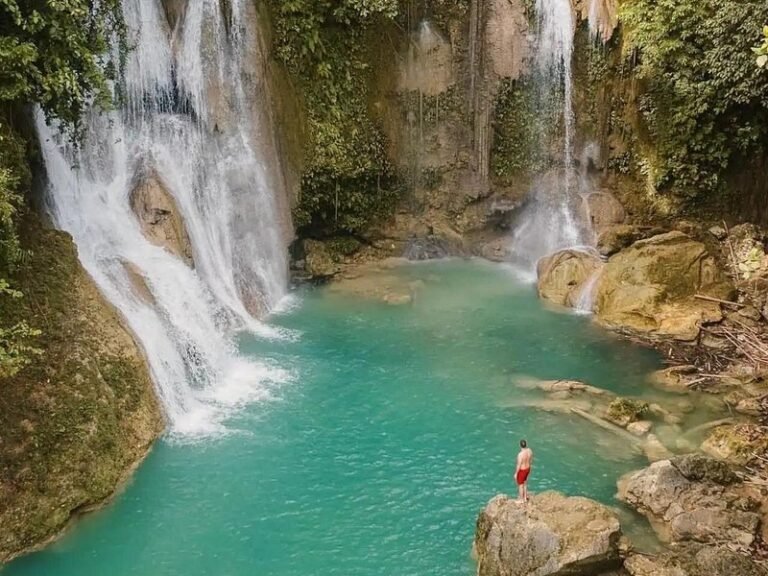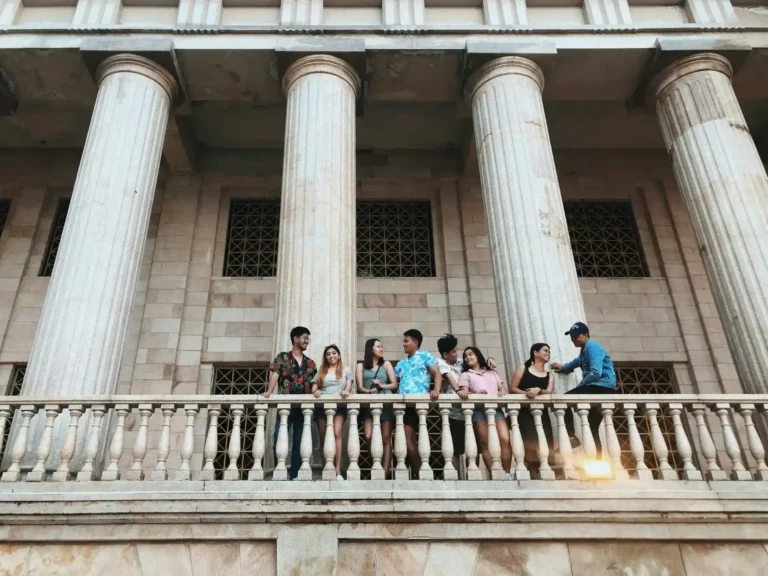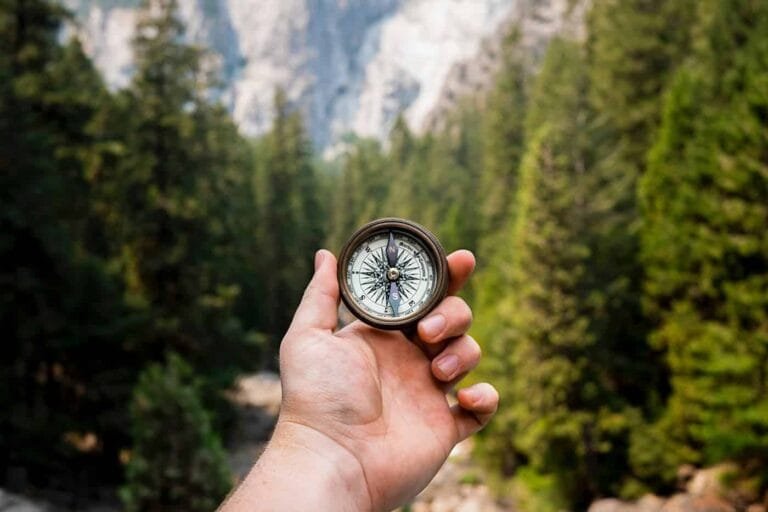The Municipality of Loay, Bohol, offers a rich tapestry of heritage, natural beauty, and historical landmarks that captivate visitors. Beyond its scenic beaches, rugged coastline, rolling hills, and lush mountains, Loay is home to significant cultural and architectural sites that reflect its deep historical roots. From the centuries-old Loay Church to the scenic Himontagon Hills, this destination guide highlights the key attractions that make Loay a must-visit in Bohol.
Loay Church
The Loay Church, dedicated to the Santissima Trinidad (Blessed Trinity), is a historic gem perched on a plateau overlooking the sea near the mouth of the Loboc River. Constructed in 1815 from coral stone and later reinforced with concrete, this church exemplifies Spanish colonial architecture with Filipino influences. Its dome and ceiling are adorned with vibrant frescoes depicting biblical figures and scenes, showcasing the artistry of the era. A separate coral stone belfry, located just steps away, adds to the church’s charm and historical significance. Despite damage from the 2013 Bohol earthquake, restoration efforts have preserved its structural integrity and artistic heritage, making it a focal point for cultural and religious exploration.
Loay Plaza Complex
The Loay Plaza Complex offers a serene and unpretentious public space, characterized by a simple grassy expanse that ends at a scenic walkway along the coastline near the Loboc River’s mouth. Flanking the plaza are two coral stone buildings, both designed in a restrained, classical style with minimal ornamentation. One serves as a public school, while the other, a two-story structure currently under renovation, is set to become an archdiocesan archive housing Spanish-era documents from the 38 parishes of the Bohol diocese. The emblem of the Virgin Mary on the two-story building adds a subtle yet meaningful touch to its facade. The plaza’s simplicity and coastal setting make it an ideal spot for leisurely strolls and reflection.
Clarin Ancestral House
Dating back to 1840, the Clarin Ancestral House is a well-preserved example of Filipino-Spanish colonial architecture. Located at the foot of the hill below the Loay Church, this large square house features a coral stone foundation, rough-hewn wooden posts, wide hardwood plank floors, and a high-vaulted receiving hall. Its slanting nipa roof, typical of traditional Filipino design, complements the Spanish-influenced structure. Though the ceiling beams require repair due to termite damage, the house remains in good condition, housing memorabilia of the prominent Clarin family, one of Loay’s politically influential clans. This ancestral home offers a glimpse into 19th-century Boholano life and is a must-visit for heritage enthusiasts.
Loay Watchtower
Situated in the seaside barangay of Villalimpia near the Loboc River’s mouth, the Loay Watchtower is a historical relic from Bohol’s colonial past. Constructed from coral stone, this watchtower, like others along Bohol’s coastline, served as a lookout for marauding pirates, allowing residents to seek safety and prepare for defense. Today, it stands at the edge of a mangrove forest, accessible by sea, and offers a tangible connection to the island’s history of resilience. Its weathered yet enduring presence makes it a compelling stop for those exploring Loay’s heritage.
Himontagon Hills
Located just 20 kilometers from Tagbilaran City, the Himontagon Hills provide a breathtaking vantage point for panoramic views of Loay, nearby towns, and, on clear days, far-off Camiguin Island. These rolling hills are a haven for trekking and hiking enthusiasts, offering scenic trails and the refreshing embrace of cool, fresh air. The natural beauty and tranquility of the hills make them an ideal spot for outdoor adventures and a perfect complement to Loay’s cultural attractions.
Visiting Loay
Loay’s attractions are easily accessible from Tagbilaran City, with public transportation options like buses, jeepneys, or tricycles available. The town’s proximity to the Loboc River and its coastal setting enhance its appeal for visitors seeking both heritage and nature. Combining a visit to Loay with nearby attractions, such as the Loboc River Cruise or Baclayon Church, creates a comprehensive Bohol experience. Ferry tickets from Cebu to Bohol can be booked via 12go, and accommodations are available through platforms like Agoda.
Conclusion
Loay, Bohol, is a destination where history, architecture, and natural beauty converge. From the coral stone elegance of the Loay Church to the historical significance of the Clarin Ancestral House and the scenic allure of the Himontagon Hills, the town offers a diverse array of attractions for travelers. Whether you’re drawn to heritage sites, cultural treasures, or outdoor adventures, Loay invites you to explore its timeless charm and rich legacy.








